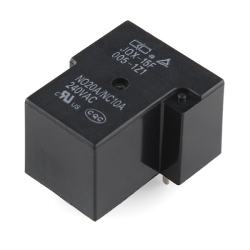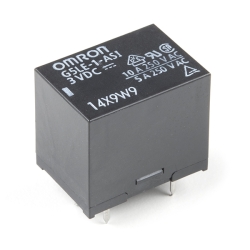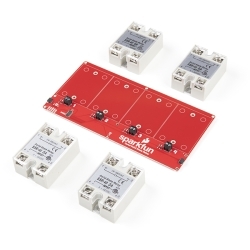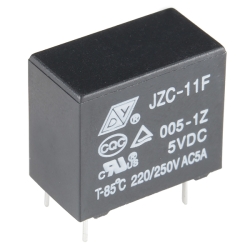Relay SPDT Sealed - 20A
COM-10924
Relay SPDT Sealed - 20A
SKU: COM-10924
$4.50
In stock
SKU
COM-10924
Product Overview
These are massive single pole - double throw (SPDT) sealed relays. This means that when current is applied to the coil it throws a simple changeover switch, terminating the connection from the NC contact to ground and closing the NO contact. Use them to switch high voltage/high current devices.
Features:
- SPDT Relay
- Contacts Rated up to 220VAC @ 20A
- Coil Voltage: 5V
- Fully Sealed
Documents:
- Datasheet (JQX-15F/005)
- Relay Tutorial
Hookup Accessories
Features & Specs
- SPDT Relay
- Contacts Rated up to 220VAC @ 20A
- Coil Voltage: 5V
- Fully Sealed
Documentation
- Datasheet (JQX-15F/005)
- Relay Tutorial
Customer Reviews

Relay SPDT Sealed - 20A
$4.50
COM-10924
Stock and Customer Discounts
$4.5 retail price.









